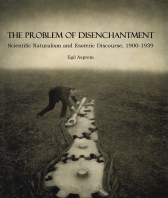The Religious Studies Project is closing up on its second birthday. It has been a strong presence for the academic study of religion online since launching in January 2012, having released about 60 podcast interviews, numerous blog-style essays, book reviews, reports from conferences and so forth. Now the gentlemen Cotter and Robertson expand business in the direction of scholarly publishing, with the release of an online open-access research article. Knut Melvær and Michael Stausberg (both University of Bergen) have the honour of pioneering what could become a very exciting new development at RSP, with an article fittingly reporting on research into the online self-presentations of the study of religion/s.
It’s a nice article, too. While it mostly confirms impressions that many scholars in this field will have gathered from personal experience, the systematic and semi-quantitative approach taken by the authors do also reveal a few slight surprises. Moreover, it gives us a more precise view of what the status is for presentations of the academic study of religion to the public.
Melvær and Stausberg collected 101 texts from the websites of 70 universities, coded these texts for various thematic issues, categorised these in a manner clearly inspired by a “grounded theory“-approach, and finally did some number-crunching to reveal patterns and trends. While there are some concerns about the selection of the data set (acknowledged by the authors; see also Brian Bocking’s comments in the comment section), the advantage of this sort of publication method is that one can make the entire data set publicly available. At least that’s something.
The general feel of the findings are quite as expected. There’s a lack of unity in self-designation across countries – Religionswissenschaft (and cognates in other languages – especially Scandinavian), religious studies, study of religion, history of religion, comparative religion are all in use, with some noticeable regional preferences. There are different perspectives on whether the endevour is a “field”, a “discipline”, a “mulitidisciplinary” field or something more suitably oxymoronic like an “interdisciplinary discipline”. And while some spend much energy demarcating their departments from theology (mostly in negative terms – “we are not educating priests”), others (but considerably fewer) emphasise the benefits of the study for personal spirituality. All this diversity is exactly what anyone who has attended a meeting of the AAR would expect.
Slightly more surprising, though, are the facts that the authors pay more attention to in their conclusions and suggestions for future practice. Despite an extensive (some would say self-obsessed) engagement in theoretical reflection on the field’s assumptions over the past few decades, the self-presentations online tend to portray a consistently naive picture of “religion”. “Religions” are things out there that do stuff to other things (e.g. it “affects”, “shapes”, and “functions”). Statements about it are on the form of “religion is” and “religion has”. Moreover, the authors observe that department websites tend to emphasise the “World Religions” paradigm (focusing on theologically correct versions of the big ones), which has been in ill favour among specialists for decades. The result is that the public face of religious studies departments effectively give a view of religion that few of the researchers who populate those departments would really vouch for. Certainly one that is contradicted by the view presented in leading journals and book series.
Why is this? Two interconnected reasons seem obvious. First of all the forum (public website), the intended audience (e.g. prospective students) and the intended effects (e.g. more enrollments) of the texts. Secondly, the fact that these texts will often not have been written by the academics themselves, or at the very least they will not have final say on composition. As Melvær and Stausberg also note, the genre borders on advertisement. Self-critical and reflexive evaluations of “the product” are seldom an ingredient of advertisements.
The authors end with some recommendations for how to forge a better public face in the future. Some of these seem like good suggestions, at the very least starting points for a discussion. But, given the advertisement function of these public presentations, one has to ask how likely it is that the ideal can be reached within the current system of funding higher education. As long as departments depend on “producing students” for their economic survival, under the threat of budget cuts on faculty, university and government levels, the realistic expectation seems that public presentations become more commercialised and public-friendly rather than more oriented towards the theoretical status and consequently less public-friendly (in the sense that descriptions will have to break with public intuitions and portray an alien, technical conception of something “everyone knows” what is).
On a less pessimistic note, it is at least encouraging to see platforms such as Religious Studies Project, which is strategically placed to mediate between hard-core academic and public discourse on “religion”, embrace open-access publishing. This alone may be a significant counterweight to the naive self-presentations of the study of religion on department websites, and may help set a new
![]()
This blog post by Egil Asprem was first published on Heterodoxology. It is licensed under a Creative Commons Attribution-ShareAlike 3.0 Unported License.







Thanks for this publicity and positive assessment, Egil. I’m going to post this through RSP social media channels now. This sort of thing is definitely a direction we are hoping to head in more frequently with the RSP in coming years.